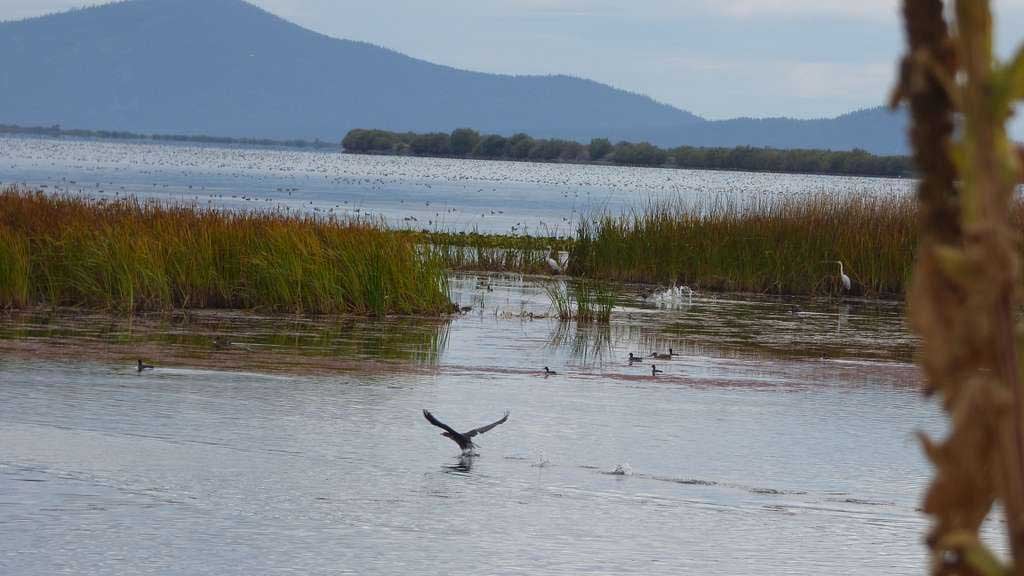80,000 Birds Have Died in Oregon Sanctuaries in Recent Weeks

More than 75,000 birds have died in wildlife sanctuaries on the Oregon-California border this month from a rare combination of avian flu and botulism, bringing to more than 80,000 the number of birds recorded dead in the last two-and-a-half months, the largest ever recorded in history.
The outbreak is the highest number of birds ever killed by avian flu in the wildlife sanctuaries in a region embattled with water supply uncertainties and drought.
More Birds are Expected to Die Before the Arrival of Colder Weather
John Vradenburg, a supervisory biologist at the refuges, expects more birds to die before colder, wet weather sets in because, he explains, botulism thrives in areas with pools of warm, stagnant water.
Vradenburg says the current outbreak coincides with the time of year when the wetlands teem with birdlife such as geese, ducks, and grebes.
The six sanctuaries – the Klamath Basin National Wildlife Refuge Complex – are the biggest wetland network west of the Mississippi River and home to 80% of the birds that migrate on the Pacific Flyway.
The Avian Flu-Botulism Outbreak Will Have a Long-Lasting Impact on the West Coast
The outbreak of the avian flu-botulism combination is described as ‘devastating’ by Teresa Wicks, a Bird Alliance biologist. She says the outbreak will have a long-lasting impact across the West Coast.
The Oregon Bird Alliance branch says the additional water released to the refuge complex after pleas by conservation groups to the Klamath Project and the U.S. Bureau of Reclamation was insufficient to slow down the outbreak.
Tule Lake Records Highest Death Rate
The largest number of deaths have occurred at the Tule Lake National Wildlife Refuge. Staff pick dead birds out of the water, an element that acts as a transmitter of the disease.
Before this outbreak, the worst event occurred in 2020 when at least 60,000 shorebirds and waterfowl in the wildlife refuges died of botulism.
Botulism gradually paralyzes birds, starting with their legs and moving upwards, until they can no longer fly or breathe. Botulism is a toxin naturally produced by bacteria found in soil but does not usually cause large-scale avian deaths.
Virus-related avian flu outbreaks have increased in recent years, killing poultry and wild birds – events that could be related to climate change as wetland habitat continues to shrink and the competition for water becomes fiercer, an event occurring in the Klamath Basin.
Conservationists say long-term solutions are required because climate change will inevitably lead to more frequent and sustained periods of high-temperature conditions.

whats to blame this time? the sheeps farting and burping, the methane from rotting on the forest floor, algae, or could it possibly be the over population of humans. naaaa maybe the computer age is causing it, now with ai thats going to double the warming rate , oh boy we’re in a heap of s*** now. hopefully ai takes over, addresses the problem in a sane and logical way, starting with the ones who ignored it